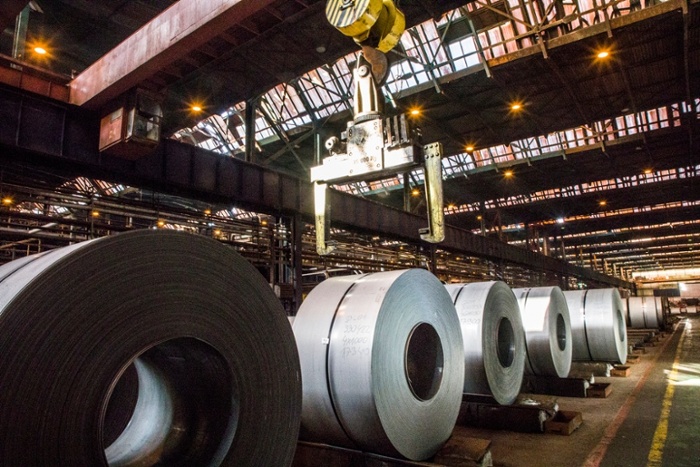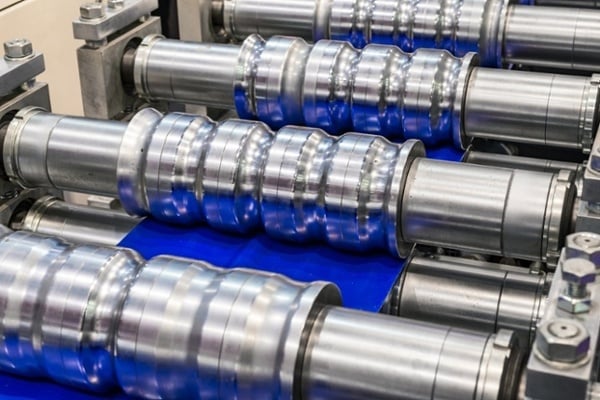7 Pitches to Sway Your Boss to Switch to Roll Formed Metal Components
7 pitches to convince management to switch to roll forming for your metal components:
Read on to learn more: |
.jpg?width=668&name=iStock-1219442186%20(1).jpg)
You rely on metal components to create quality products. You’ve read up on roll forming and think this process can save your company money while producing a better product.
However, your boss isn’t easily convinced. They are content with your current process because “That’s how we’ve always done it.”
These six words have contributed to the decline of every great empire on earth. Although there is value in honoring tradition, tradition can’t drive business growth. “That’s how we’ve always done it” isn’t what created the iPhone, the self-driving car, or the drone.
However, change for no reason can be just as disastrous. When you transition to a new metal manufacturing process, the goal is to optimize your product, supply chain, and ROI. Here’s how to convince your higher-ups that roll forming is the correct process for your company.
Proving It’s Time for New Sheet Metal Manufacturing Processes
Before making any important decision for the business, your boss will ask for a few good reasons to make the change.
Here are seven things to pitch to your boss when discussing new metal manufacturing processes:
- Your volumes are outgrowing the ROI of your current processes
- Your amount of scrap & waste is exorbitant
- Your current process is inefficient for your product
- You want more control over processes and tooling
- You want to be more eco-friendly
- You want to streamline your supply chain with vendor-managed inventory
- You want to take advantage of lean manufacturing processes
1. Your Volumes Are Outgrowing the ROI of Your Current Processes
Different metal manufacturing processes have their strengths and weaknesses. Some methods are more cost-effective at small volumes; others are more cost-effective and efficient at large volumes.
As your business grows and demand increases, you’re faced with producing more components using a process designed for smaller volumes. It was fine when you were finding your feet, but you've outgrown it. Roll forming is perfect for medium- to high-volume production. Volumes as low as 10,000 to 20,000 linear feet per year can be cost-effective for some profiles.
Calculate: Take a walk through your plant and note choke points.
If work is stacking up, your process has become a constraint! It may even be limiting the number of shippable units you produce. This seemingly minor obstruction is an exponential cost detriment if that's the case.
2. Your Amount of Scrap & Waste Is Exorbitant
Scrap is one of those unseen costs that can majorly impact your profits. Scrap and wastes are physical manifestations of time, effort, and money. How much does it hurt your company to scrap an entire order due to a processing error? That’s an entire material order’s worth of revenue out the window.
Some metal manufacturing processes produce a large amount of scrap. Roll forming creates almost none, with scrap metal only 1 to 3% of your overall costs.
Calculate: You can calculate the cost of scrap based on the percentage of material that doesn’t leave the manufacturing facility.
Your roll former’s standard cost should account for scrap, but a walk on the production floor and a talk with your operators will tell the real story. Is your scrap cost being calculated accurately?
3. Your Current Process Is Inefficient for Your Product
Complex parts require more precise processes. When forming sheet metal, a brake press is certainly cheap up to a point. However, it lacks the delicacy to produce a high-quality complex part.
Roll forming turns out high-precision metal components, with tolerances up to +/- 0.005” on some profile segments. Overall part lengths can be accurate up to +/- 0.020”. Roll forming is more cost-effective and efficient than other processes, with in-line punching features like holes, slots, and embossments.
Calculate: How much money do you waste on extraneous forming processes, setup time, number of operators, and the number of process queues and stops and secondary operations?
4. You Want More Control Over Processes & Tooling
Some processes originate as soft, general tooling, and universal general punching techniques. But as time transpires and volumes increase, dedicated higher volume tooling is a justified investment. You should also consider whether you’ll need tooling for other processes happening at the same time.
If you own the tooling exclusively, you can save thousands per year on manual process costs, setup, storage, etc. With smart purchases, roll form tooling is no more expensive than any other type of metal manufacturing.
Calculate: Determine the cost of purchasing tooling vs. using existing soft universal tools.

5. You Want to Be More Eco-Friendly
The environmental impact of your product and processes relies on several factors, including:
- Scrap/waste
- Recyclability of materials
- Process efficiency
- Material choice
Eco-friendly companies appeal to many demographics (both consumer and B2B buyers).
Calculate: Would you lose or gain customers by becoming more eco-friendly? Annual impact on the environment with current processes? (Scrap, recycling, efficiency, material)
6. You Want to Streamline Your Supply Chain With Vendor-Managed Inventory
Vendor-managed inventory takes a weight off your company’s shoulders. You rely on your vendor’s experience to hold and distribute products when it makes the most sense.
Roll forming companies have systems in place to do this effectively. You’ll never have to worry about low or surplus stock. Your roll former will use their professional management experience, forecasting methods, and company history to make sure orders are fulfilled just right.
Calculate: Examine the current costs of managing inventory, surplus inventory, stock-outs, expedited shipping, poor forecasting, and the cost of last-minute manufacturing needs.
7. You Want to Take Advantage of Lean Manufacturing Processes
Efficiency and cost are the two main reasons to switch to lean manufacturing. A new process should remove waste and streamline your system.
Waste isn’t just scrap metal – it’s also wasted time, effort, brainpower, and space. Inventory wastes a surprising amount of money just sitting around. Lean manufacturing restructures processes to take the shortest, most efficient route through any project.
These processes allow labor, time, creativity, and other resources to streamline all processes. Roll forming companies using lean manufacturing processes like Kanban keep your prices low. From administration to distribution, everyone works at their full potential to get a job done. This also improves teamwork and facilitates a “continuous improvement” culture around the organization.
Calculate: How would your cash flow improve by cutting inventory and lead times by 20%?
‘That’s How We’ve Always Done It’ Doesn’t Create Quality Metal Components
Just because a company has always done something one way doesn’t mean it’s the best way. We’ve helped companies around the country save money while producing high-quality metal components since 1904.
We’d like to help you create a more efficient and cost-effective supply chain. Download our Comprehensive Design Guide to Great Roll Formed Parts below to learn more:
(Editor's note: This article was originally published in December 2016 and was recently updated.)
You May Also Like
These Related Stories

Commercial Roll Formed Products: A Guide to the Best Materials

Cold Roll Forming Vs. Hot Rolled: Which is Right for Your Project?




